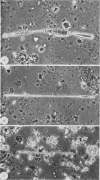Abstract
Concentrations and length distributions of uncoated and coated amphibole-type fibres in samples of human lung taken at necropsy were measured by optical microscopy using the membrane filter technique that enables fibres with diameters down to about 0.2 micron to be detected. The subjects included 10 who died with mesothelial tumours, three with lung cancer, and eight of other causes. Measurements of fibre concentrations are compared with those of other workers. It can be deduced from the length distributions that fibres less than 5 microns long are cleared from the lung more efficiently than longer ones. The clearance of short fibres appears to be inhibited in subjects with asbestosis, however. The length distributions of uncoated and coated fibres were dissimilar. In general, few fibres less than 10 microns in length were coated and few greater than 40 microns in length were uncoated. The probability of a fibre of given length, however, becoming coated varied considerably from subject to subject. Possible reasons for this are discussed.
Full text
PDF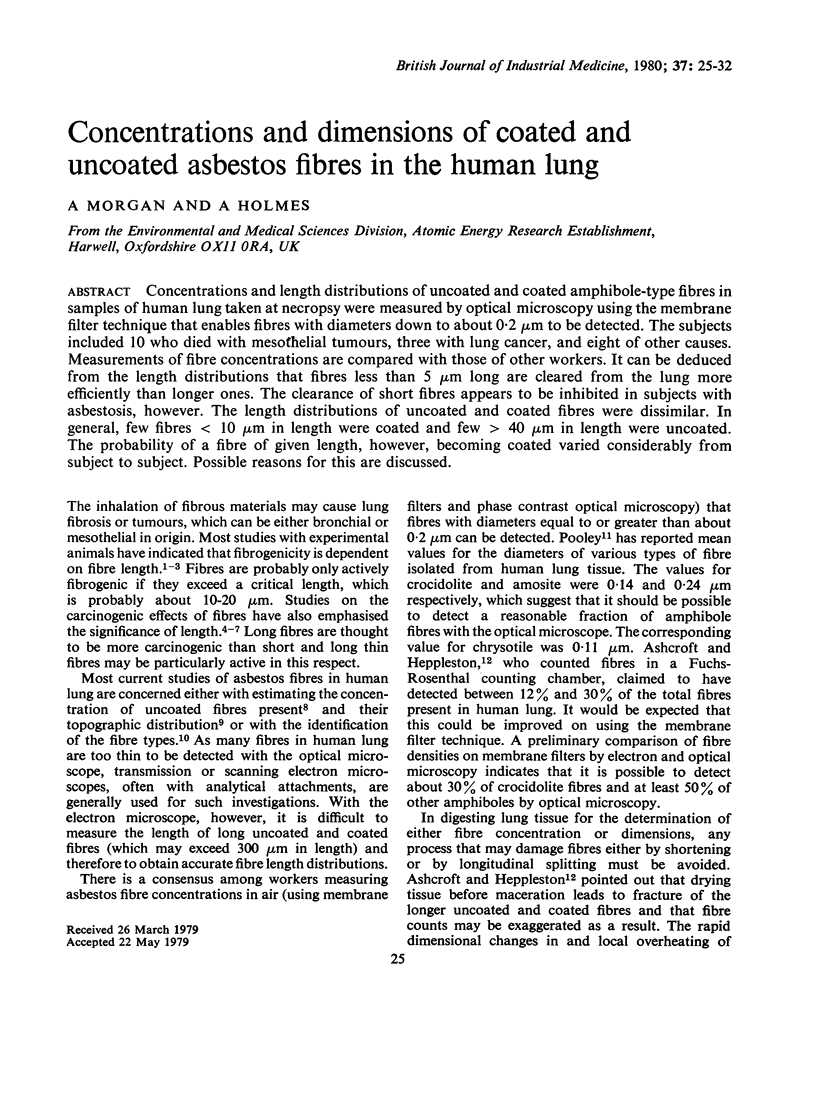

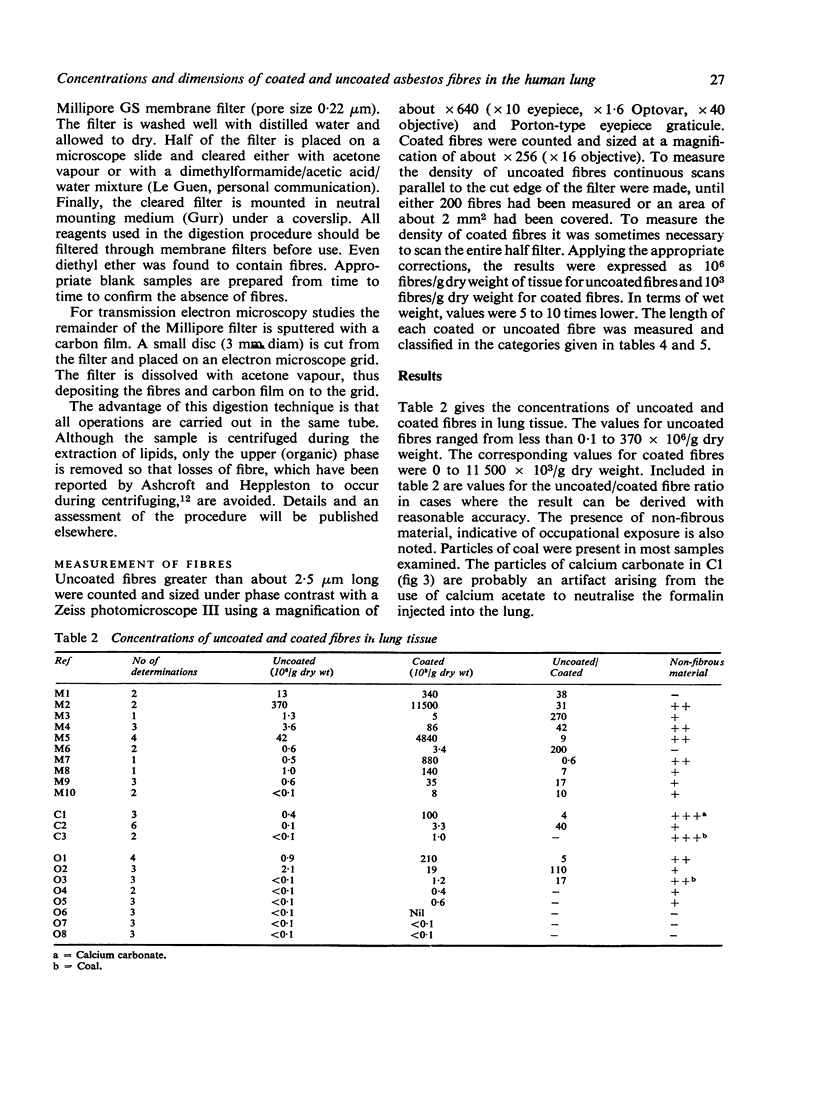
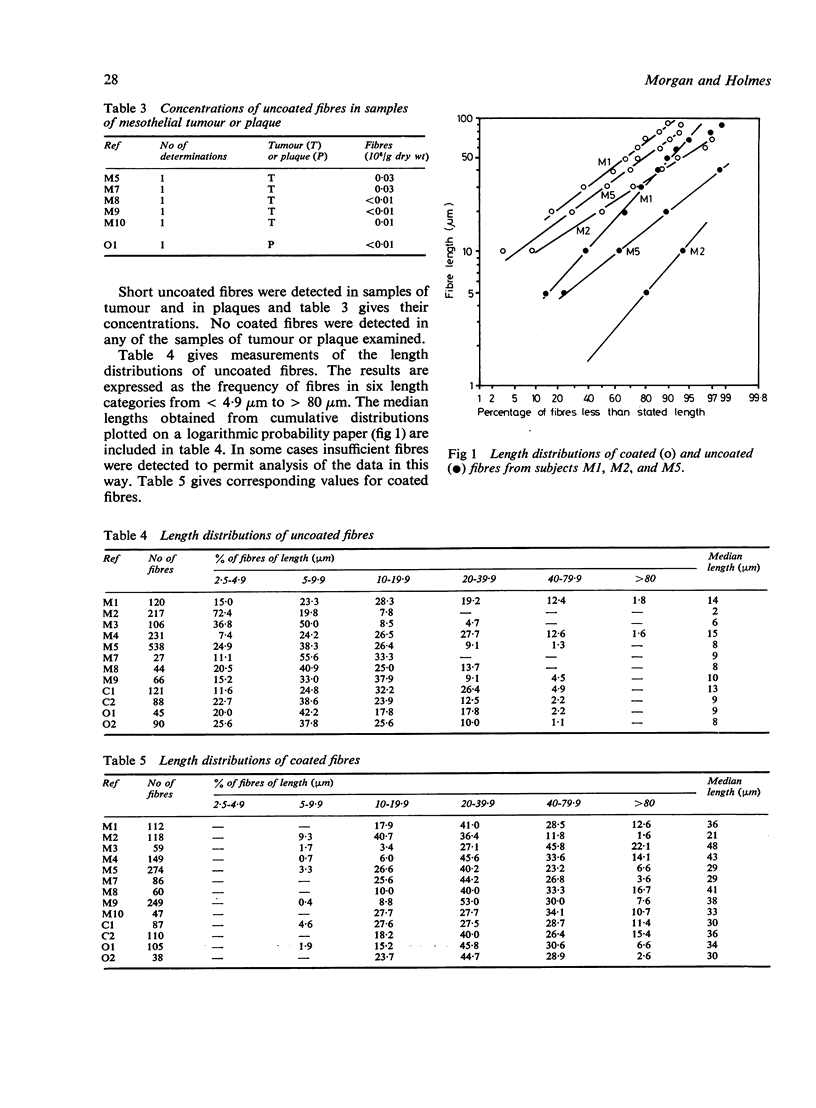
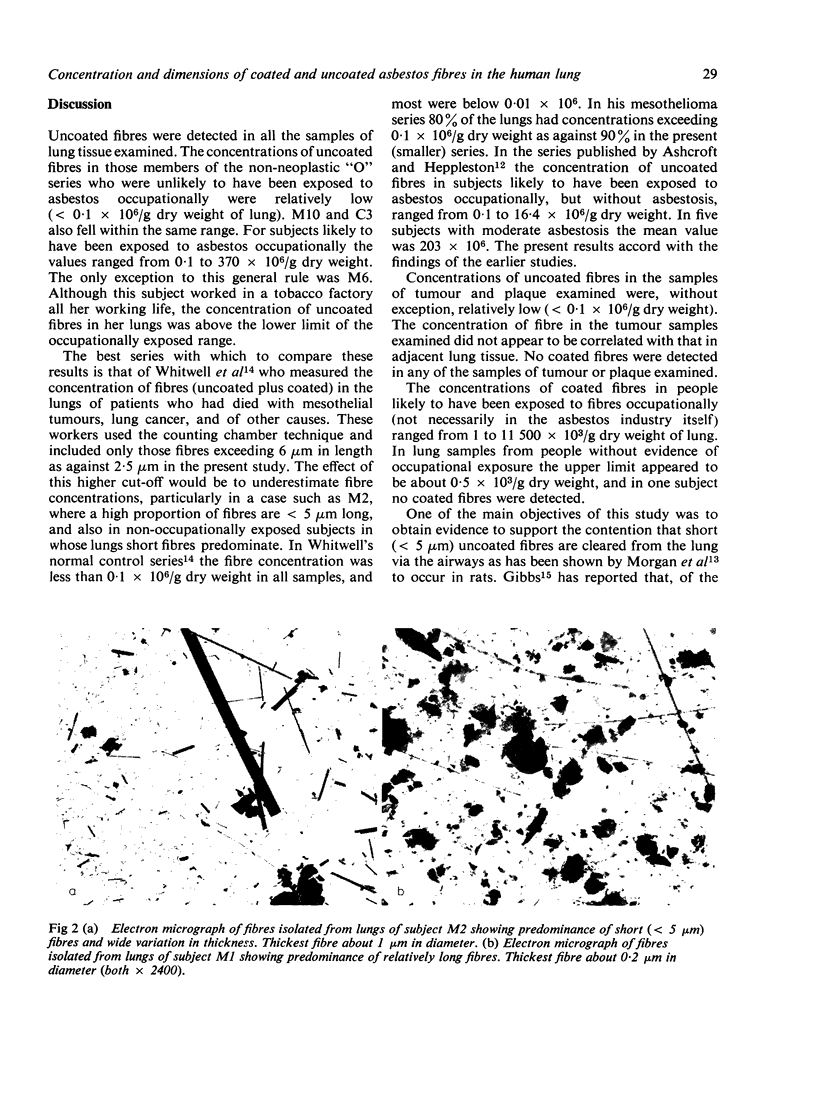
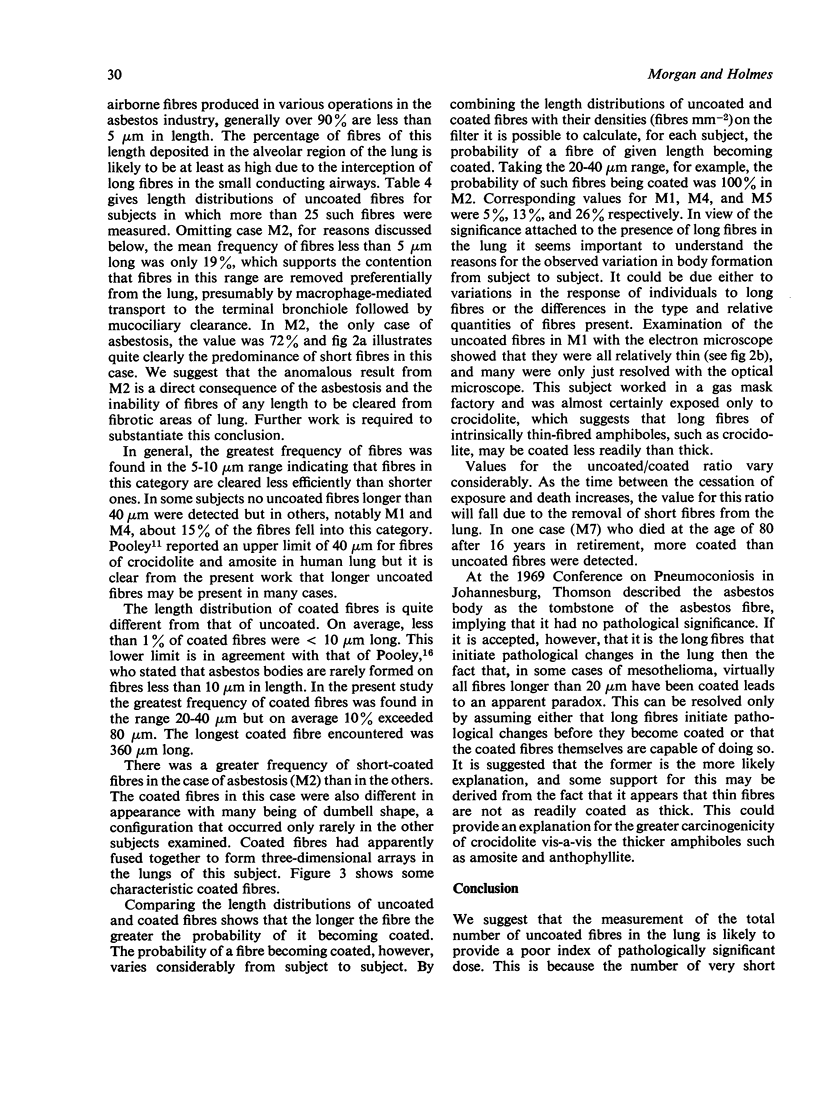

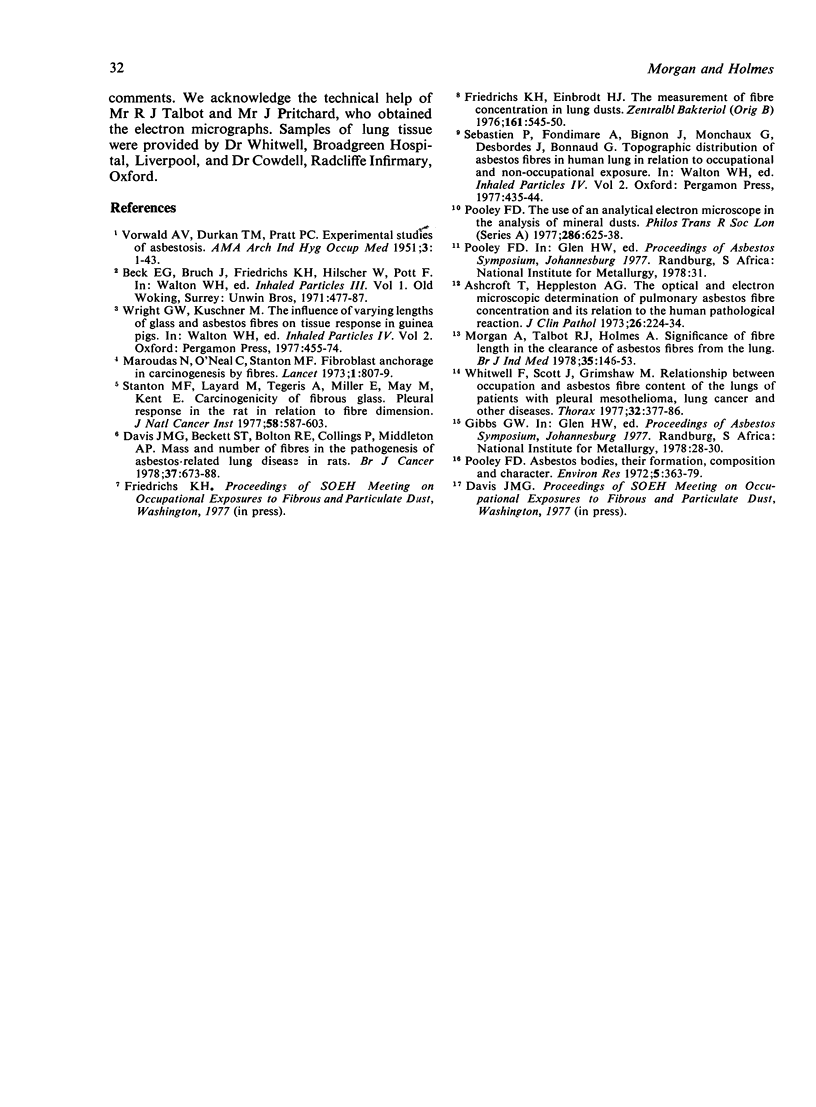
Images in this article
Selected References
These references are in PubMed. This may not be the complete list of references from this article.
- Ashcroft T., Heppleston A. G. The optical and electron microscopic determination of pulmonary asbestos fibre concentration and its relation to the human pathological reaction. J Clin Pathol. 1973 Mar;26(3):224–234. doi: 10.1136/jcp.26.3.224. [DOI] [PMC free article] [PubMed] [Google Scholar]
- Beck E. G., Bruch J., Friedrichs K. H., Hilscher W., Pott F. Fibrous silicates in animal experiments and cell-culture-morphological cell and tissue reactions according to different physical chemical influences. Inhaled Part. 1970;1:477–487. [PubMed] [Google Scholar]
- Davis J. M., Beckett S. T., Bolton R. E., Collings P., Middleton A. P. Mass and number of fibres in the pathogenesis of asbestos-related lung disease in rats. Br J Cancer. 1978 May;37(5):673–688. doi: 10.1038/bjc.1978.105. [DOI] [PMC free article] [PubMed] [Google Scholar]
- Friedrichs K. H., Einbrodt H. J. Die Messung der Faserkonzentration in Lungenstäuben. Zentralbl Bakteriol Orig B. 1976 Mar;161(5-6):545–550. [PubMed] [Google Scholar]
- Maroudas N. G., O'Neill C. H., Stanton M. F. Fibroblast anchorage in carcinogenesis by fibres. Lancet. 1973 Apr 14;1(7807):807–809. doi: 10.1016/s0140-6736(73)90604-1. [DOI] [PubMed] [Google Scholar]
- Morgan A., Talbot R. J., Holmes A. Significance of fibre length in the clearance of asbestos fibres from the lung. Br J Ind Med. 1978 May;35(2):146–153. doi: 10.1136/oem.35.2.146. [DOI] [PMC free article] [PubMed] [Google Scholar]
- Pooley F. D. Asbestos bodies, their formation, composition and character. Environ Res. 1972 Dec;5(4):363–379. doi: 10.1016/0013-9351(72)90039-4. [DOI] [PubMed] [Google Scholar]
- Sebastien P., Fondimare A., Bignon J., Monchaux G., Desbordes J., Bonnaud G. Topographic distribution of asbestos fibres in human lung in relation to occupational and non-occupational exposure. Inhaled Part. 1975 Sep;4(Pt 2):435–446. [PubMed] [Google Scholar]
- Stanton M. F., Laynard M., Tegeris A., Miller E., May M., Kent E. Carcinogenicity of fibrous glass: pleural response in the rat in relation to fiber dimension. J Natl Cancer Inst. 1977 Mar;58(3):587–603. doi: 10.1093/jnci/58.3.587. [DOI] [PubMed] [Google Scholar]
- VORWALD A. J., DURKAN T. M., PRATT P. C. Experimental studies of asbestosis. AMA Arch Ind Hyg Occup Med. 1951 Jan;3(1):1–43. [PubMed] [Google Scholar]
- Whitwell F., Scott J., Grimshaw M. Relationship between occupations and asbestos-fibre content of the lungs in patients with pleural mesothelioma, lung cancer, and other diseases. Thorax. 1977 Aug;32(4):377–386. doi: 10.1136/thx.32.4.377. [DOI] [PMC free article] [PubMed] [Google Scholar]
- Wright G. W., Kuschner M. The influence of varying lengths of glass and asbestos fibres on tissue response in guinea pigs. Inhaled Part. 1975 Sep;4(Pt 2):455–474. [PubMed] [Google Scholar]





